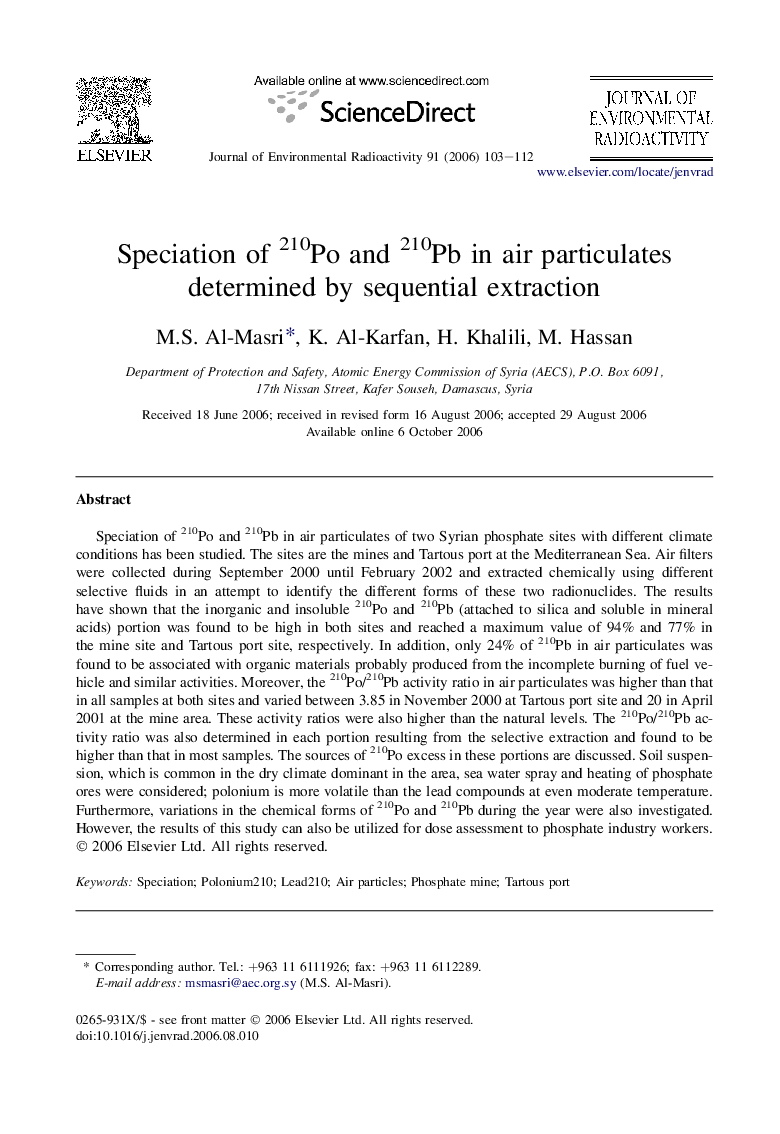| Article ID | Journal | Published Year | Pages | File Type |
|---|---|---|---|---|
| 1739613 | Journal of Environmental Radioactivity | 2006 | 10 Pages |
Speciation of 210Po and 210Pb in air particulates of two Syrian phosphate sites with different climate conditions has been studied. The sites are the mines and Tartous port at the Mediterranean Sea. Air filters were collected during September 2000 until February 2002 and extracted chemically using different selective fluids in an attempt to identify the different forms of these two radionuclides. The results have shown that the inorganic and insoluble 210Po and 210Pb (attached to silica and soluble in mineral acids) portion was found to be high in both sites and reached a maximum value of 94% and 77% in the mine site and Tartous port site, respectively. In addition, only 24% of 210Pb in air particulates was found to be associated with organic materials probably produced from the incomplete burning of fuel vehicle and similar activities. Moreover, the 210Po/210Pb activity ratio in air particulates was higher than that in all samples at both sites and varied between 3.85 in November 2000 at Tartous port site and 20 in April 2001 at the mine area. These activity ratios were also higher than the natural levels. The 210Po/210Pb activity ratio was also determined in each portion resulting from the selective extraction and found to be higher than that in most samples. The sources of 210Po excess in these portions are discussed. Soil suspension, which is common in the dry climate dominant in the area, sea water spray and heating of phosphate ores were considered; polonium is more volatile than the lead compounds at even moderate temperature. Furthermore, variations in the chemical forms of 210Po and 210Pb during the year were also investigated. However, the results of this study can also be utilized for dose assessment to phosphate industry workers.
